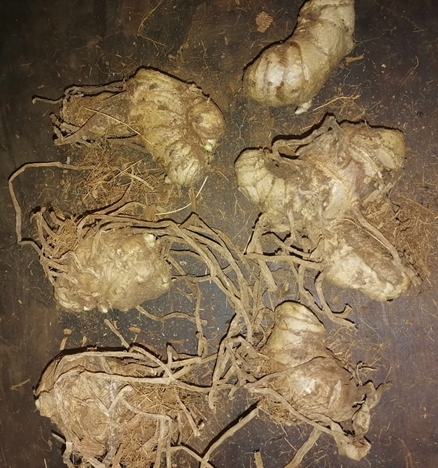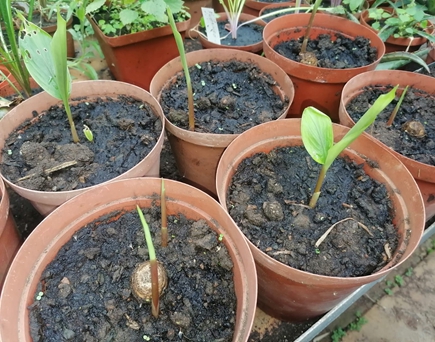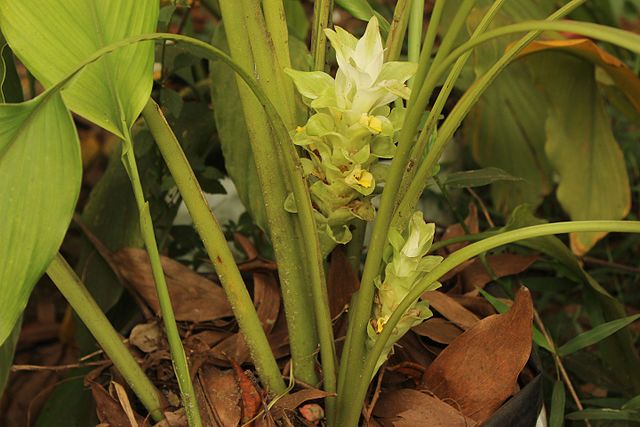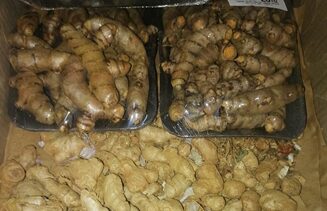The ginger family (Zingibaraceae) is a large one, with about 50 genera and roughly 1 600 species. Many are important ornamental, spice, or medicinal plants. Spices we are familiar with in South Africa include ginger (Zingiber), turmeric (Curcuma), and cardamom (Amomum).
In recent years customer demand for ginger root and turmeric has increased the number of farmers growing locally to supply the fresh food market.
And where there is a profitable farming community centered on a crop, suddenly one finds a number of new related crops being grown by collectors and made available to home growers.
Here are some of the more interesting, and potentially commercially viable, ginger relatives currently available to grow in South Africa.
Cultivation
Gingers are herbaceous plants, spreading from a rhizome underground. The above ground parts are soft stemmed, variable in height but seldom more than 2m tall in the tallest species.
Most gingers prefer some shade, are all thirsty plants that prefer rich, well drained soil and are intolerant of water logging.


The parts used differ from species to species, from the rhizome to the seeds.
Gingers generally prefer to grow in filtered shade, making them very suitable to mixed intercropping. For example, turmeric grows very well as a second crop in dragon fruit orchards, and true ginger grows with sugar cane to great success.
Long season summer crops
All gingers are long season, sub-tropical, summer crops. Depending on parts used, plants can be left to grow for multiple seasons.
Tuber species such as ginger and turmeric can be left in the ground a maximum of two seasons. This will increase crop size significantly. Seed species such as cardamom can be left in ground for longer as lifting and splitting clumps is only done when plants become overgrown.
Anywhere in South Africa
Despite loving the heat, one can successfully cultivate most gingers anywhere in South Africa if one plants only when the soil has warmed properly. And then to adopt appropriate way to manage the dormant tubers in the colder months. If one is growing true ginger in Bloemfontein for instance, it is probably best to lift the tubers in winter in case they freeze.
In contrast, in KZN a clump of ginger can be left in the ground for an additional season to become especially huge for harvest.
Ornamental gingers
Ornamental gingers are seldom palatable, as are some of the medicinal species in the family, but can be very pretty. Some ornamental gingers are invasive species in South Africa, and should not be grown.
Available in South Africa
- True ginger: A number of varieties exist, from large, sushi ginger to smaller gingers meant for powdering.

One can plant fresh ginger bought from a grocer, but not off season, ie, any fresh ginger bought during the summer months is likely to be imported and possibly irradiated. In any event, these will not grow.
True ginger bought in the winter up to late spring is more likely to be locally sourced. Named ginger varieties are available in season from seed merchants and will give you a more predictable crop outcome.
Planting is done in early summer, and harvest is typically in the winter months.
- Turmeric: Culinary turmeric is available as yellow and orange fleshed rhizomes. Fresh rhizomes can be planted in early summer, and harvested when the plant dies down in autumn. Or tubers are left in the soil for harvest as needed over winter.

Some growers maintain a few big clumps in the shady parts of their food forests to use in just this manner.
If one lives in areas where the soil is wet in winter it is best to lift the clumps and store in dry sand in the garage.
Some speciality turmeric species exist on the market, “black turmeric” for instance (which is more gray fleshed than black) is not very tasty. However it is grown as a medicinal plant due to very high levels of cucurmin. This is the compound that gives turmeric its reputation as a premier medicinal food.
- Galangal: Known as the “Prince of gingers”. This is by far the largest ginger one can grow in the garden, getting 2m high in flower.
Its tubers have a pungent bite, and a pine-needle-ish aftertaste that some people find very strong.

Nevertheless, this is a ginger that is used heavily in Thai cooking, and also as a sushi ginger. It is very productive and ornamental. One can leave stands in the garden for many years, and harvest as needed any time of year.
In a warm climate this species is evergreen, and has lovely small yellow flowers in summer. There is some confusion in the growing community between this species and some of the ornamental (and invasive!) shell gingers. Thus, be careful to only buy from reputable sellers, as this species is unique in taste and look!
- Cardamom: There are a number of species in this group including black cardamom. All are grown for their fragrant seed. One can grow them from seed sourced from spice shops – whole cardamom pods normally are unroasted and contain viable seed.

Cardamom makes for an ornamental addition to a food forest but is more tropical than other gingers and will be killed by prolonged low temperatures.
Uses and potential markets
Local markets for fresh spices are large and can absorb the outputs of most market growers. Markets for medicinal supplements are more specialised but buyers exist for specialty produce.
Any crop that can be incorporated into a mixed growing scheme should be investigated by smallholder farmers, as it will increase the profitability of a section of cultivated land.
The ginger relatives lend themselves to this optimisation, and deserve the attention of the smallholder farming community for this reason alone.
For more information contact Jason Sampson at jason.sampson@up.ac.za

